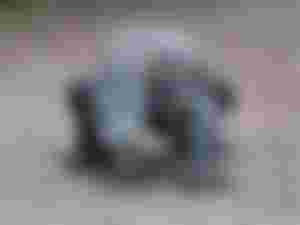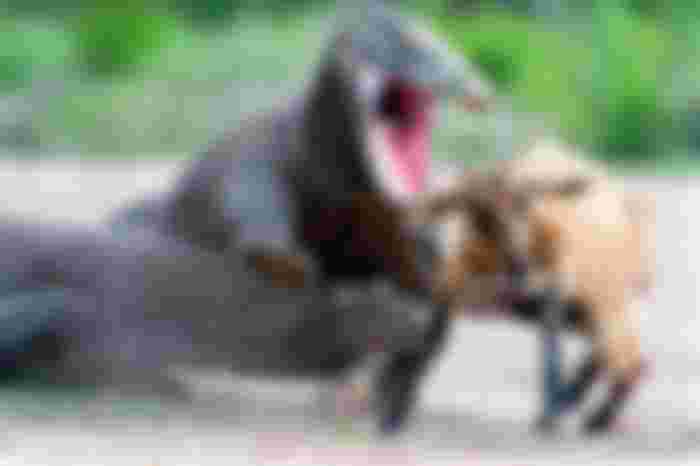
Scientists in the West did not know until 1912 that the existence of the Komodo dragon. Europeans first noticed that this unusual creature lived in Indonesia two years earlier, when Lieutenant Van Stein van Hensbroken of the Dutch colonial administration heard rumors of a land crocodile. Their unusual name comes from rumors about a dragon-like animal that lives on the island of Komodo.
A male Komodo dragon can grow up to three meters, while on average they weigh about 90 kilograms, and females grow up to 1.8 meters. Their skin is usually blue, orange, green, and gray and is very durable, reinforced with osteoderm. In addition, they have a strong, muscular tail and long claws.

These animals are extremely rare and can only be found in the wild on the Komodo Islands in the Lesser Sunda archipelago of Rinka Island, Gili Montatng, Gili Dasami, and Flores. Komodo dragons are usually not too picky when it comes to choosing a place to live, so they can be found both in the savannah and in dry tropical forests and monsoon forests. No matter where they live, they enjoy high temperatures. However, it is interesting that they have extremely practical homes, they dig or look for dens in which they are warm at night and fresh during the day.
Hungry Komodo dragons are often forced to swim to a neighboring island in search of food, so they have become excellent swimmers, and can move miles from shore. One of the most famous data about chamber dragons is that they are mesoderm and so good hunters that they can eat very large prey such as water buffalo, deer, pig, and even man. In addition, they do not hesitate to taste a smaller member of their species, and during one meal they can eat food in an amount that makes up 80 percent of their total body weight.

Yet they don’t eat people often. Moreover, over the past 41 years, four people have been killed, and the last attack occurred when a man fell from two apples right in front of two Komodo dragons. However, these animals prefer to eat the bodies of deceased people, which is why the inhabitants of the islands on which they place stones on the graves of their loved ones in order to protect their remains.

It is not uncommon for adult Komodo dragons to eat a cub, so the young have developed an interesting strategy. They are rolled in the feces to look like a less appealing snack.
Kraken, a resident of Washington National Zoo, is slowly but surely changing the way scientists observe Komodo dragons. This female has learned to approach the person who whistles and recognizes the people who care for her. In addition, she also exhibited behavior that can be considered a game, and that with her human friends. Before Western scientists described and analyzed it, the locals gave the Komodo dragon the name "Ora", which means land crocodile. The Komodo dragon is not endangered but is classified as a vulnerable species. Currently, there are about six thousand of them in nature and protected area in the Komodo National Park, which includes all the islands on which they live except the island of Flores. They first hatched outside Indonesia at the Smithsonian National Zoo in 1992, when four cubs were born, thirty of whom now live in zoos around the world.

https://read.cash/@DzonyMerlin94/ten-facts-about-indians-dd391420
https://read.cash/@DzonyMerlin94/five-types-of-balcony-flowers-that-always-thrive-b375f08c
https://read.cash/@DzonyMerlin94/ham-with-mustard-d722e720
https://read.cash/@DzonyMerlin94/a-life-without-hope-and-will-is-no-life-at-all-e203a5c5
https://read.cash/@DzonyMerlin94/first-love-forgets-no-c1052fa3
https://read.cash/@DzonyMerlin94/very-strange-health-conditions-f86261be




